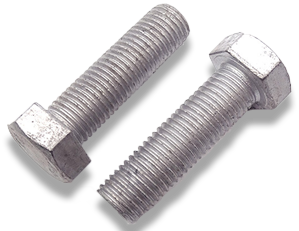

Understanding the Importance and Applications of All Thread Rods in Construction and Manufacturing Industries
Ağu . 13, 2024 15:22 Back to list
Understanding the Importance and Applications of All Thread Rods in Construction and Manufacturing Industries
Understanding All Thread Rod An Essential Component in Construction and Fabrication
All thread rods, commonly referred to as all-thread or fully threaded rods, are versatile fasteners widely used in construction, manufacturing, and fabrication industries. These rods, which are cylindrical in shape and feature continuous threads along their length, serve a variety of purposes in securing, anchoring, and connecting different components. Their adaptability and strength make them a popular choice among engineers, contractors, and DIY enthusiasts alike.
Composition and Design
Typically made from materials such as stainless steel, carbon steel, or alloy steel, all thread rods are designed to withstand varying loads and environmental conditions. The choice of material significantly impacts the rod's corrosion resistance and tensile strength. For example, stainless steel all thread rods are ideal for use in wet or corrosive environments, while carbon steel may be favored for its cost-effectiveness in less demanding applications.
The threading on all thread rods is essential for their functionality. The continuous thread allows for various types of nuts and washers to be used, making it easy to adjust the length of the connection and secure multiple components together. The dimensions and specifications of these rods adhere to industry standards, such as ASTM (American Society for Testing and Materials) or ISO (International Organization for Standardization), ensuring that they meet performance criteria across different applications.
Applications in Construction
In the construction industry, all thread rods are utilized for a multitude of applications
. They are commonly used in precast concrete construction to tie together panels and provide structural integrity. The rods are embedded into the concrete, allowing for a secure anchor point that can hold significant weight and withstand tension.Moreover, all thread rods play a critical role in bracing systems, supporting frameworks, and securing heavy equipment. Their ability to be cut and modified on-site allows contractors to customize lengths to meet specific project requirements, enhancing efficiency and reducing waste.
all thread rod

Advantages of All Thread Rods
One of the primary advantages of all thread rods is their versatility. Available in various diameters and lengths, they can be easily adapted to suit different tasks, from light-duty applications to heavy loads. Additionally, the ability to use them with different types of nuts and washers simplifies the fastening process, enabling assembly and disassembly without special tools.
Another significant benefit is their strength-to-weight ratio. All thread rods maintain a robust structural performance while remaining relatively lightweight compared to other fastening options. This feature makes them ideal for use in applications where weight reduction is essential without compromising safety and durability.
Installation and Maintenance
Installing all thread rods is straightforward, often requiring only basic hand tools. Precise measurements and appropriate torque are necessary to ensure that the fastening connections are secure and aligned. Regular maintenance, such as checking for corrosion, can extend the lifespan of all thread rods, particularly in outdoor applications.
Conclusion
All thread rods are indispensable components in various sectors, particularly in construction and manufacturing. Their strength, versatility, and ease of installation make them a preferred choice for many applications. As industries continue to evolve, the importance of understanding and utilizing all thread rods effectively will remain crucial, supporting the development of safe and sustainable structures. Whether for commercial projects or DIY endeavors, all thread rods exemplify how a simple design can greatly enhance functionality and reliability in construction.
Latest news
-
Premium Fasteners Manufacturer | AI-Driven Solutions
NewsAug.01,2025
-
Hot Dip Galvanized Bolts - Hebei Longze | High Strength, Corrosion Resistance
NewsAug.01,2025
-
High-Strength Hot Dip Galvanized Bolts - LongZe | Corrosion Resistance, Custom Sizes
NewsAug.01,2025
-
Best Self Tapping Screws for Drywall - Fast & Secure Installation
NewsJul.31,2025
-
High-Strength Hot Dip Galvanized Bolts-Hebei Longze|Corrosion Resistance&Customization
NewsJul.31,2025
-
Hot Dip Galvanized Bolts-Hebei Longze Metal Products|Corrosion Resistance&High Strength
NewsJul.31,2025

